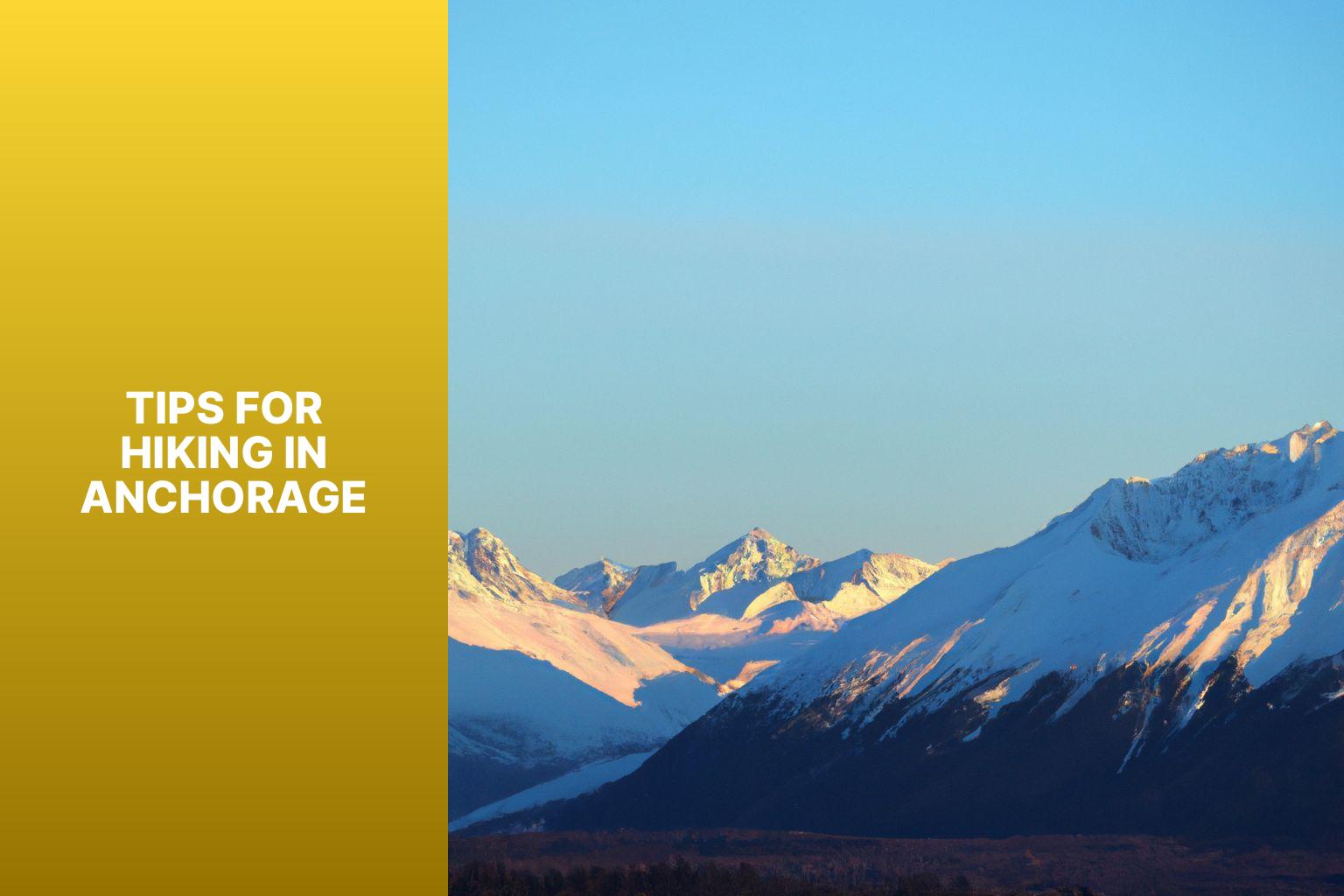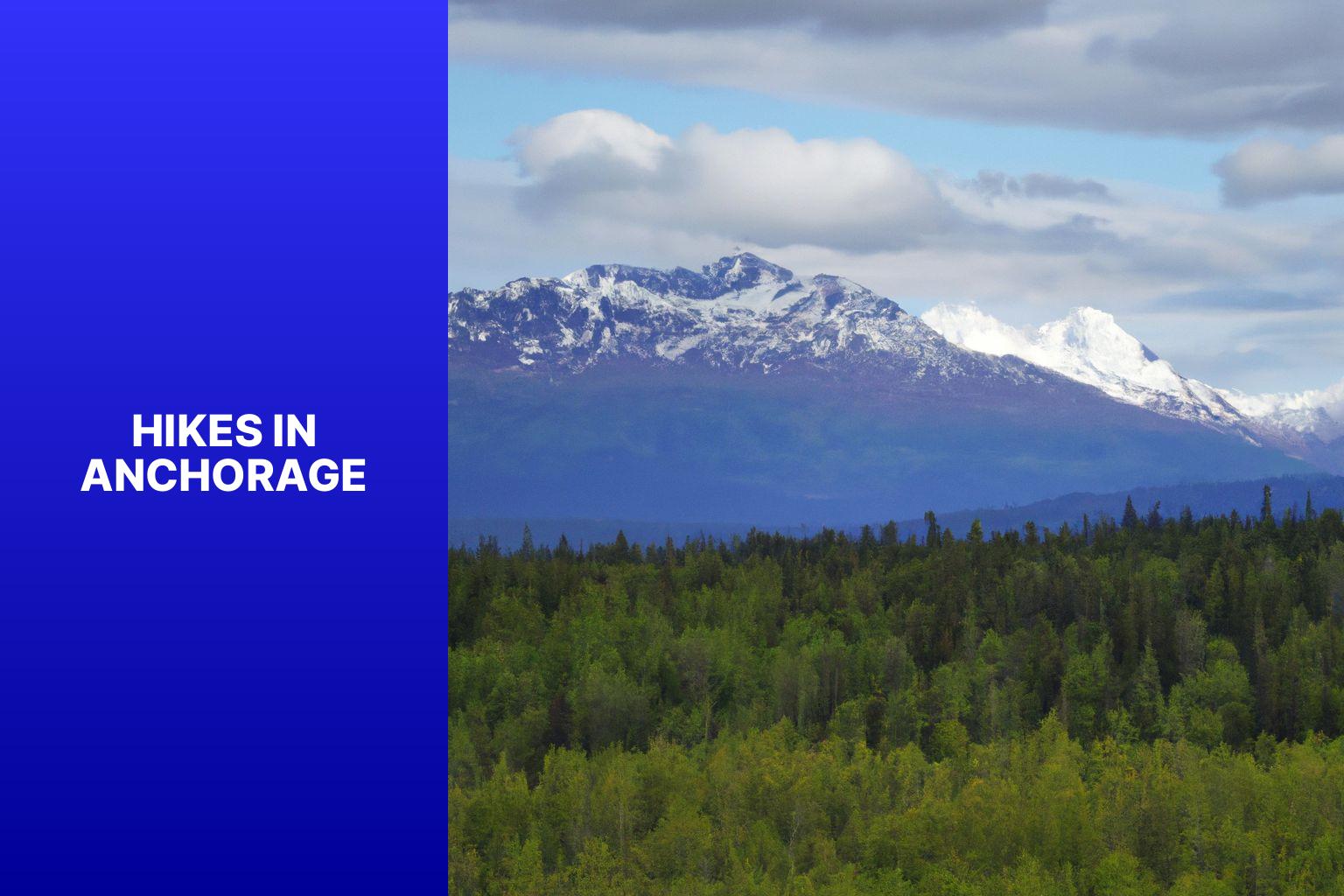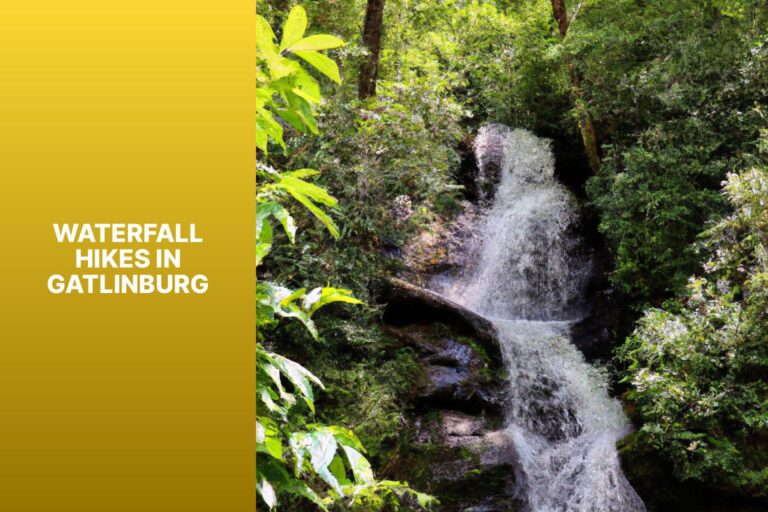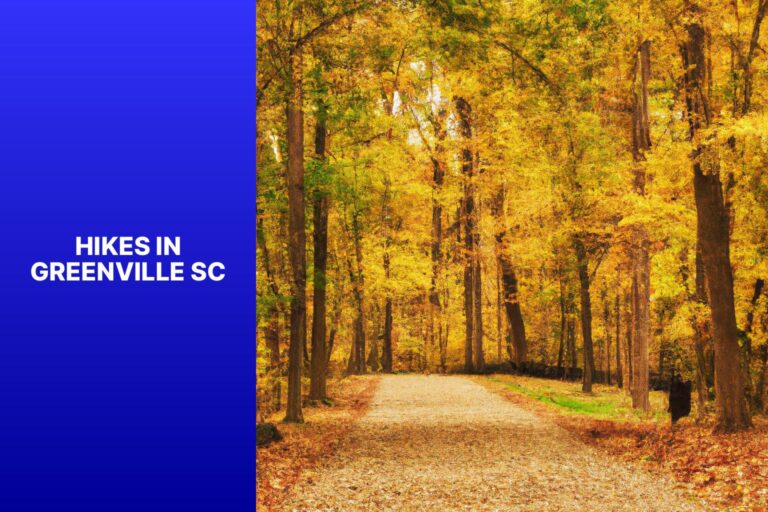Hikes in Anchorage
Anchorage, Alaska, offers an abundance of breathtaking hiking trails surrounded by stunning natural landscapes. From mountains to coastal trails, there are hikes suitable for all levels of hikers. Some of the top hikes in Anchorage include Flattop Mountain, Kincaid Park, Chugach State Park, Tony Knowles Coastal Trail, and Eagle River Nature Center.
Flattop Mountain is a favorite among locals and visitors alike, offering panoramic views of the city and surrounding mountains. Kincaid Park is renowned for its diverse trails through forests and along the coastline, providing opportunities for wildlife spotting. Chugach State Park boasts a vast network of trails suitable for different skill levels, including the famous Crow Pass Trail. Tony Knowles Coastal Trail offers stunning views of the ocean, mountains, and downtown Anchorage, while Eagle River Nature Center is perfect for exploring the Chugach Mountains and the Eagle River Valley.
When hiking in Anchorage, it is essential to follow some tips to ensure a safe and enjoyable experience. Checking the weather is crucial, as the conditions can change rapidly. Carrying essential gear such as appropriate clothing, water, and snacks is necessary to stay hydrated and energized. It is important to stay on designated trails to preserve the environment and minimize the risk of getting lost. Being bear aware and familiarizing yourself with bear safety protocols is crucial, as encounters with bears are possible in certain hiking areas.
The best time to hike in Anchorage is during the summer months from June to August when the weather is pleasant, and the trails are accessible. It is important to note that weather conditions and daylight hours can vary, so it is advisable to plan your hikes accordingly.
By exploring the top hikes in Anchorage and following these tips, you can make the most of your hiking adventures in this captivating Alaskan city.
Key takeaway:
- Hikes in Anchorage offer diverse options: Anchorage is home to several top hikes including Flattop Mountain, Kincaid Park, Chugach State Park, Tony Knowles Coastal Trail, and Eagle River Nature Center. These hikes provide a range of experiences for nature lovers.
- Hiking in Anchorage requires preparation: Before heading out on a hike in Anchorage, it is important to check the weather, carry essential gear, stay on designated trails, and be bear aware. These tips ensure a safe and enjoyable hiking experience.
- Best time to hike in Anchorage: The best time to go hiking in Anchorage is during the summer months when the weather is milder and the trails are more accessible. This allows hikers to fully enjoy the natural beauty of the area.
Top Hikes in Anchorage

Photo Credits: Jasonexplorer.Com by Kevin Nguyen
Anchorage is a hiker’s paradise, with its breathtaking trails that cater to all levels of adventurers. In this section, we’ll unveil the top hikes that Anchorage has to offer. From the majestic Flattop Mountain to the tranquil Kincaid Park, and from the rugged Chugach State Park to the scenic Tony Knowles Coastal Trail, we’ll take you on a journey through Anchorage’s most exquisite natural wonders. Lace up your boots and get ready for a hiking experience like no other!
1. Flattop Mountain
Flattop Mountain is a top destination for hikers in Anchorage. Follow these steps for an enjoyable and safe hike:
- Start early to avoid crowds and have enough time to complete the hike.
- Check the weather forecast and dress accordingly.
- Bring essential items such as water, snacks, a map, a compass, and a first aid kit.
- Park at the Glen Alps Trailhead and begin on the Flattop Trail.
- Stay on designated paths to protect the alpine vegetation.
- Take breaks while ascending to enjoy the views of Anchorage, the Cook Inlet, and surrounding peaks.
- Take time at the summit to admire the scenery and take photos.
- Descend the same way, being cautious of slippery sections and loose rocks.
- Be aware of wildlife, especially bears, and know how to respond if encountered. Carry bear spray for safety.
Pro-tip: Hike Flattop Mountain on weekdays or in the offseason to avoid crowds and enjoy the tranquility of the surroundings.
2. Kincaid Park
Kincaid Park is a remarkable hiking destination in Anchorage. The park offers scenic trails suited for hikers of different skill levels. One particularly popular hike is the Coastal Trail at Kincaid Park, which spans approximately 11 miles and treats visitors to stunning ocean views.
Another notable trail is the Tony Knowles Coastal Trail, which meanders through forests and provides opportunities for wildlife sightings.
For those seeking a shorter option, the Mize Loop Trail is an excellent choice, offering approximately 3 miles of well-maintained paths through enchanting forests and meadows.
Exploring Kincaid Park on foot presents the chance to encounter diverse wildlife, including majestic moose, majestic bald eagles, and an array of beautiful birds.
Don’t forget to bring your camera along to capture the breathtaking views and wildlife encounters. It’s important to consider what to wear hiking in Hawaii for a comfortable and enjoyable experience.
It is important to stay on the designated trails and remain mindful of any changes in weather conditions. It is advisable to carry essential hiking gear such as a map, compass, water, and snacks.
Offering trails suitable for nature enthusiasts of all levels, Kincaid Park ensures that everyone can experience the wonders of nature at their own pace.
Whether you prefer a leisurely stroll or a more challenging hike, this park has a trail that will cater to your preferences.
As you enjoy the beauty of nature in Anchorage, remember to prioritize safety and show respect for the environment.
3. Chugach State Park
Chugach State Park in Anchorage, Alaska offers breathtaking hiking opportunities. Here are some key details about the park and its hiking trails:
1. Chugach State Park is a massive outdoor wonderland, spanning over 495,000 acres of pristine wilderness. It is one of the largest state parks in the United States.
2. The park has diverse landscapes, including rugged mountains, lush forests, and sparkling lakes. Hikers can explore a variety of terrains and enjoy stunning vistas.
3. Chugach State Park has numerous hiking trails suitable for all skill levels. Whether you are a novice or an experienced adventurer, you will find a trail suitable for December hiking that suits your abilities and interests.
4. One popular hike in Chugach State Park is the Crow Pass Trail. This challenging 21-mile trail takes you through alpine meadows, glaciers, and historical mining sites.
5. For those seeking a shorter but equally rewarding hike, the South Fork Eagle River Trail is a great option. This 5-mile trail leads you through a scenic valley and offers breathtaking views of Eagle and Symphony Lakes.
6. It is important to be well-prepared when hiking in Chugach State Park. Check the weather forecast before heading out and dress in layers to adapt to changing conditions. It’s essential to know what to wear hiking Machu Picchu in order to be prepared.
7. Carry essential gear such as a map, compass, first aid kit, and plenty of water. Also, remember to bring bear spray, as wildlife encounters, especially with black bears, are possible in the park.
8. Stay on designated trails to protect the fragile ecosystems and minimize your impact on the environment. Respecting trail markers and signage is essential for both your safety and the preservation of the park.
Hiking in Chugach State Park offers an incredible opportunity to immerse yourself in Alaska’s natural beauty. Whether you choose a challenging trail or a leisurely stroll, you are sure to create unforgettable memories in this picturesque wilderness.
4. Tony Knowles Coastal Trail
The Tony Knowles Coastal Trail in Anchorage, Alaska offers stunning views of the city skyline, mountains, and coastline. Here are some key aspects to consider when hiking the Tony Knowles Coastal Trail:
1. Scenic Route: The Tony Knowles Coastal Trail follows the coastline and provides breathtaking views of the mountains and ocean. You can enjoy the natural beauty of Alaska while getting exercise.
2. Length and Difficulty: The Tony Knowles Coastal Trail is 11 miles long, making it a moderate-length hike. It is mostly flat with some gentle inclines and declines. Suitable for hikers of all skill levels.
3. Wildlife Encounter: The Tony Knowles Coastal Trail passes through various habitats, increasing chances of spotting wildlife such as moose, bald eagles, and beluga whales. Remember to keep a safe distance and avoid disturbing the animals.
4. Accessibility: The Tony Knowles Coastal Trail is easily accessible from downtown Anchorage. Start at the Tony Knowles Coastal Trailhead near 2nd Avenue or join at various points along the coast.
5. Points of Interest: Along the Tony Knowles Coastal Trail, you’ll find informative signs, rest areas, and viewpoints to capture the stunning vistas. Don’t forget your hiking attire for Sedona.
6. Seasonal Considerations: The best time to hike the Tony Knowles Coastal Trail is during the summer months when the weather is milder and the views are clear. Be prepared for changes in weather and pack appropriate hiking gear Colorado and clothing.
By considering these factors, you can have a fulfilling hiking experience on the Tony Knowles Coastal Trail, connecting with nature and enjoying the beauty of Anchorage’s coastline.
5. Eagle River Nature Center
The Eagle River Nature Center, located in Anchorage, Alaska, is a well-known and highly regarded hiking destination. It caters to hikers of all levels, offering a diverse range of trails that accommodate both leisurely walks and more challenging treks. The undisputed highlight of the center is the Crow Pass Trail, a magnificent 23-mile path that showcases stunning scenery and awe-inspiring panoramic vistas.
In addition to providing exceptional hiking opportunities, the center enhances the overall experience by offering informative signage along the trails. These signs provide valuable knowledge about the local flora, fauna, and geological formations, enriching your understanding and appreciation of the surrounding natural wonders. The Eagle River Nature Center also offers convenient amenities such as picnic areas and restrooms for the comfort and convenience of hikers.
If you are planning a visit to the Eagle River Nature Center, it is crucial to be well-prepared. First and foremost, do not forget to check the weather conditions beforehand as Alaska’s weather can change rapidly. Ensuring you have essential gear, including water, snacks, hiking shoes, sun protection, and insect repellent, is paramount. It is of utmost importance to adhere to the designated trails while hiking to protect the delicate ecosystem and minimize any negative impact. It is prudent to be mindful of bears in the area and, if recommended, carry bear spray for your own safety and peace of mind. It is worth noting that the summer season is the most favorable time to embark on your hiking endeavors at the Eagle River Nature Center, as the weather is more agreeable and the trails are easily accessible.
By embarking on a journey to explore the extraordinary natural beauty of the Banff winter hikes, you will be treated to the unparalleled splendor of Anchorage’s landscapes. Immerse yourself in the splendid wilderness that Alaska has to offer, and you are guaranteed a truly unforgettable experience.
Tips for Hiking in Anchorage

Photo Credits: Jasonexplorer.Com by Bradley Adams
Thinking of going on a hiking adventure in Anchorage? Here are some valuable tips to help you make the most of your outdoor experience. We’ll cover essential knowledge such as checking the weather conditions, packing the necessary gear, sticking to designated trails, and staying alert for any encounters with bears. So, let’s get ready to explore the breathtaking trails of Anchorage while ensuring your safety and enjoyment along the way!
1. Check the Weather
When planning a hike in Anchorage, it is important to check the weather beforehand for a safe and enjoyable experience. Here are some essential facts about checking the weather:
1. Make sure to check the weather forecast in Anchorage using reliable weather forecast websites or apps. These sources will provide you with the most up-to-date information on the weather conditions.
2. When checking the forecast, be sure to focus on the specific area or trail where you plan to hike. It’s important to remember that weather patterns can vary in different parts of Anchorage.
3. Pay attention to important details such as temperature, precipitation, wind speed, and visibility. This information will help you determine what clothing and gear to bring with you on your hike.
4. Stay updated on any weather warnings or alerts issued by local authorities. If severe weather is predicted, it’s best to postpone your hike or choose a different trail that may be safer.
5. Always be prepared for sudden changes in weather, even if the initial forecast seems favorable. It’s a good idea to bring extra layers, rain gear, and sun protection to ensure your comfort and safety.
6. Consider the time of year when checking the weather for your hike. Keep in mind that Anchorage experiences different seasons and associated weather patterns. Winter hikes, in particular, require extra precautions due to colder temperatures and potential hazards like snow and ice.
7. Trust your own judgment when interpreting the weather forecast. If you are unsure about the conditions, it is always better to err on the side of caution and postpone your hike until conditions improve.
By taking the time to check the weather before your hike in Anchorage, you can ensure your safety and have a more enjoyable outdoor adventure.
2. Carry Essential Gear
When embarking on a hiking expedition, it is crucial to remember to carry essential gear. Having the necessary equipment with you ensures that you are fully equipped to handle any unforeseen circumstances that may occur during your outdoor escapade.
3. Stay on Designated Trails
When hiking in Anchorage, it is imperative to stay on designated trails for safety and to protect the environment. Here are some steps to follow when going on a hike in the area:
1. Prior to your hike, make sure to thoroughly research and plan your route. Choose a trail that is clearly marked and has designated paths.
2. Stay vigilant and pay close attention to trail signs and markers. These signs will indicate which paths are approved for hiking and which ones should be avoided.
3. It is crucial to refrain from taking shortcuts or deviating from the designated trail. Venturing off the marked path can lead to dangerous situations, such as getting lost or encountering hazardous terrain.
4. Respect any trail closures or restrictions in place. Trails may be temporarily closed for maintenance or because of wildlife activity. It is important to adhere to these guidelines in order to protect yourself and the environment.
5. Ensure that you maintain a safe distance from wildlife and avoid disrupting their habitats. Take pleasure in observing wildlife from a distance and never attempt to approach or feed the animals.
Pro-tip: By staying on designated trails, you not only guarantee your own safety but also preserve the natural beauty of the area for future hikers. Following marked paths allows for a worry-free hiking experience while minimizing your impact on the environment. Remember, leaving no trace is crucial for the sustainability of our outdoor spaces.
4. Be Bear Aware
Edited
- Be aware of your surroundings and stay alert. Bears are usually found in remote and wooded areas, so be cautious when hiking in those areas.
- Make noise while hiking to avoid surprising a bear. Clap your hands, talk loudly, or sing to alert bears of your presence.
- Always carry bear spray and know how to use it. Bear spray deters bears effectively.
- Travel in groups whenever possible. Bears are less likely to approach larger groups.
- Keep food and scented items securely stored and away from your camping area. Bears are attracted to food smells and may approach your campsite if there is accessible food.
- If you encounter a bear, do not run. Back away slowly and avoid sudden movements. Do not approach the bear or try to take photos.
- Learn to recognize signs of bear activity, such as tracks, scat, or overturned rocks. If you notice signs of recent bear activity, change your hiking route.
- Follow all bear safety guidelines provided by park authorities or local hiking organizations. These guidelines are crucial for your safety and the bears’ well-being.
Being bear aware is vital for your safety while hiking in Anchorage. Follow these guidelines and be prepared for a safe and enjoyable hiking experience in bear country.
Best Time to Hike in Anchorage
The best time to hike in Anchorage depends on weather conditions, trail accessibility, and personal preferences. When considering the best time to hike in Anchorage, it’s important to take into account the following factors:
– Summer months: June, July, and August are widely regarded as the best time to hike in Anchorage. These months offer mild weather, with temperatures ranging from 50 to 70 degrees Fahrenheit. The longer days during this time of year provide ample daylight for extended hikes on the Boston fall hikes trails.
– Spring: April and May can also be a great time for hiking in Anchorage. As the snow melts, trails become more accessible. It is essential to check trail conditions and be prepared for unpredictable weather, including 40 degree weather, rain and mud.
– Fall: September and October provide a picturesque setting with stunning autumn foliage and cooler temperatures. It is a pleasant time to embark on hiking adventures. Nevertheless, it’s important to remember that days are shorter during this season, so it’s advisable to bring a headlamp for late afternoon hikes.
– Winter: For winter activity enthusiasts, hiking in Anchorage during winter can offer a unique and serene experience. It is crucial to have the proper gear, including warm clothing and traction devices for icy trails. If planning to explore higher elevations, it is vital to be aware of avalanche safety precautions.
The best time to hike in Anchorage ultimately depends on individual preferences and priorities, as well as considering the weather conditions, trail accessibility, and personal safety.
Frequently Asked Questions
1. What is the difficulty level of O’Malley Peak Trail in Anchorage?
O’Malley Peak Trail in Anchorage is considered to be a hard trail with a distance of 7.7 miles, steep elevation, and challenging terrain.
2. Are there any easy hiking trails in Anchorage with beautiful views?
Yes, Anchorage offers several easy hiking trails with stunning views. Some examples include Anchorage Overlook Trail, a short loop trail with beautiful views of the city, and Thunderbird Falls Trail, an easy out-and-back trail that leads to a 200-foot waterfall.
3. Can you recommend a moderate hike near Anchorage with berry picking opportunities?
Rendezvous Peak Trail is a moderate 3.1-mile trail near Anchorage that starts at the end of Arctic Valley Road. It is known for its amazing views and offers berry picking opportunities in late August.
4. Which trail in the Chugach National Forest offers a hand-powered tram crossing?
Winner Creek Trail in the Chugach National Forest is a relatively flat trail that features a unique hand-powered tram crossing Winner Creek Gorge.
5. What are some shorter hike options in Anchorage with fewer crowds?
Near Point via Stuckagain Heights is a moderate 3-mile trail in Anchorage that provides amazing views of the city and is a good alternative to longer hikes. Albert Loop at Eagle River Nature Center is another shorter trail option with potential wildlife sightings and less foot traffic.
6. Is Flattop Mountain Trail suitable for experienced hikers?
Yes, Flattop Mountain Trail is a hard 3.2-mile trail in Anchorage with amazing views at the top. It includes a 1,500-foot elevation change and is recommended for experienced hikers.







